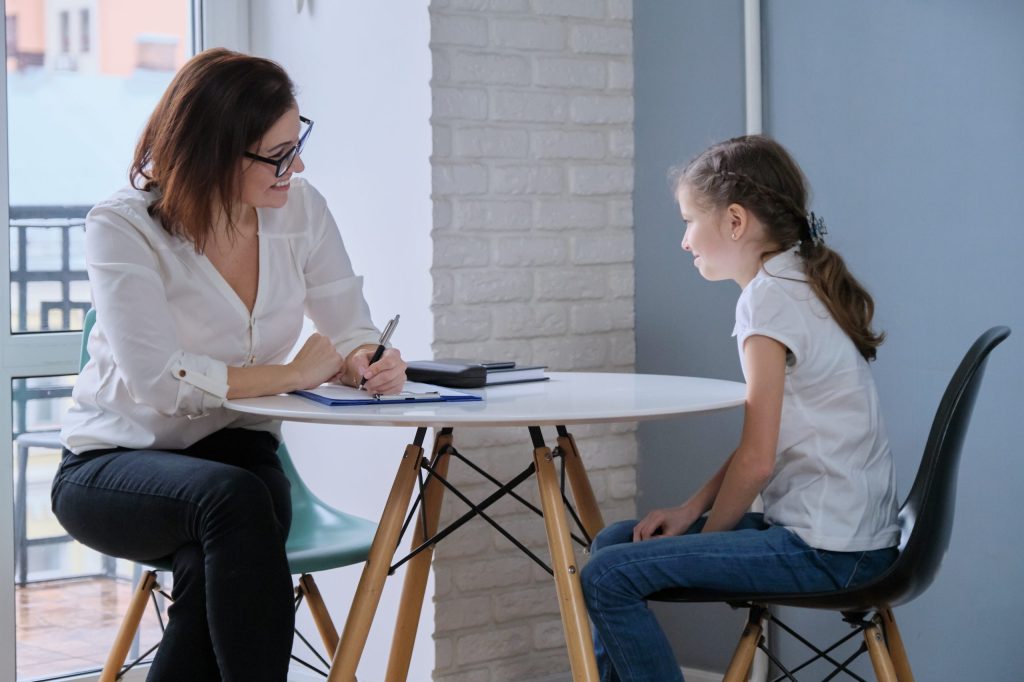Just 4 letters but a complex difficulty: Attention Deficit Hyperactivity Disorder (ADHD)
14th October, 2022
Kate, Enjoy Education’s Head of Learning Development, discusses how ADHD is diagnosed and the practical steps we can take to support each individual child to thrive.

Our understanding of ADHD has improved over recent years, however, what lies behind this label is not always simple.
Getting a diagnosis can be a long and difficult process. The symptoms have to be at a level that are deemed to be an impairment. This means they are having a negative impact on everyday functioning, family interactions and are a problem for the individual. The symptoms need to have been present in early- to mid-childhood and be inconsistent with the developmental level of the child. It is this immature behaviour, or lack of expected self-regulation, that often gets attention.
Not only are the diagnostic criteria for getting a diagnosis strict but, even when fulfilled, a diagnosis often comes without, or with simply generic, advice.
Symptoms of ADHD affect daily life and ability to engage with learning or work, often impacting on self-esteem and mental health. By understanding the profile of the individual, the right support, adaptations and development of skills can be given. What are their challenges today? What skills or support do they need now and for the future? These questions are important to ask whether there is a diagnosis of ADHD or just some of the symptoms.
A diagnosis uses three categories: hyperactive type, inattentive type or combined type. Symptoms fall into three different areas: hyperactivity, impulsivity and inattention.
Hyperactivity
Hyperactivity is the behaviour most commonly associated with ADHD and often gets noticed early on. It can show as a need to move, to fidget, squirming in the seat, fingers always busy, a chatterbox with a busy mind, always on the go with only 2 speeds – stop and go. They may appear impatient, forgetful and disorganised, getting bored easily and finding it hard to start or complete tasks.
Impulsivity
Impulsivity can attract trouble: acting without thinking, calling out in class or doing something without taking a pause to realise that their actions may have consequences.
Inattention
Inattention is harder to spot. The internal mental distractibility interferes with reading, watching movies and following conversations or teaching. The mind wanders, thoughts are on the go at all times, flitting between lots of different things.
With so many of these feelings and thoughts internal what we often see is the emotional instability — anger and frustration, irritability and mood swings. Not being able to shut the mind down can affect sleep and low self-esteem is common. It’s easy to understand why self-esteem will be affected if the difficulty paying attention is not noticed, understood or supported.

How can we support our children once they’ve got a diagnosis?
Expecting a child to just try harder doesn’t work. We need to acknowledge that their brain is working in a different way, developing more slowly but often described as being like a racing car without brakes. They need specific help, in the same way as a child with poor eyesight may need glasses to see the board. Breaking down information, building it up in steps with clear achievable goals, immediate positive feedback and rewards, are the fundamentals of support.
There are amazing strengths that go with ADHD which we must not overlook. There’s the ability to hyper-focus. Typically, this strength is often overlooked or thought to be a sign that ADHD is not present. I often hear parents say they don’t think their child has ADHD because they can sit still and focus for hours on Lego, a video game, art or practising a skill in sport, but this simply isn’t true.
Another strength, the product of the busy mind, is creativity which can manifest itself in many different ways, artistically and in business. We only have to research famous people with ADHD to see how varied this can be.
Whether there is a diagnosis, or just observed behaviour that we associate with ADHD, the key is understanding the individual’s profile.
How can we adapt learning environments to support students with ADHD?
The challenges a child faces in school and socially will vary depending on their age and their environment.
Inattentive difficulties can mean that the visually busy and noisy classroom can be a difficult environment and the first thing we notice are gaps in the child’s learning. The physical environment can be made right for the individual by allowing standing, movement breaks or prompts when attention wanders.
Learning how to plan helps with getting started and feeling in control whilst information delivered in bitesize chunks and linked to what is already known, supports retention. The most effective intervention will have multiple components and the flexibility to respond to the individual. In some cases, one to one tutoring support focused on teaching the student the best strategies for their way of learning can make a significant difference in the short and long term.
Difficulties change over time and it is a case of matching our expectations to what support is needed and what strategies need to be taught.
How important is a diagnosis, and how does Kate work with students with ADHD?
Executive functioning skills are a set of skills we develop between the ages of 4 and 20 years and we know that in an individual with ADHD these skills are slower to develop, often lagging 2 to 3 years behind. Knowing what skills are lagging helps manage expectations, guides support and informs effective intervention.
A diagnosis of ADHD is important and can lead to greater understanding, acceptance and access to vital support when it comes to school and university. However, there is often a long wait to see a clinician and even when the diagnosis is given there can be little detail of the individual’s profile or practical advice.
Therefore, my job is take all the feedback provided from the child’s parents, the school and any reports available and with this information and speaking to parents directly, I pass on practical strategies which will make a tangible difference to everyday life, your child’s self-esteem and supporting their mental wellbeing.
I believe we should always meet a child’s needs irrespective of whether they have a diagnosis. Their behaviour tells us they are having difficulty, skills are lagging and they need our support. There is no one intervention that is effective for everyone so understanding a child’s profile of difficulties is the starting point.
When we consider ADHD we should be careful not to look through a single diagnostic lens but instead think more broadly about the behaviour we are seeing. We must see the individual and look beyond labels.
We know that we are all different and generally this is something we celebrate in society. I believe it is something that we should celebrate in our children, knowing and accepting that there will be skills that need teaching, weaknesses that need supporting and strengths to be celebrated and built on.
Kate is Enjoy Education’s Head of Learning Development. She works closely with families to understand each child’s unique learner profile, unpack Educational Psychology reports where needed and create practical strategies for success, whether a child has a diagnosis or not. Get in touch with our team to find out more and book a call with Kate.